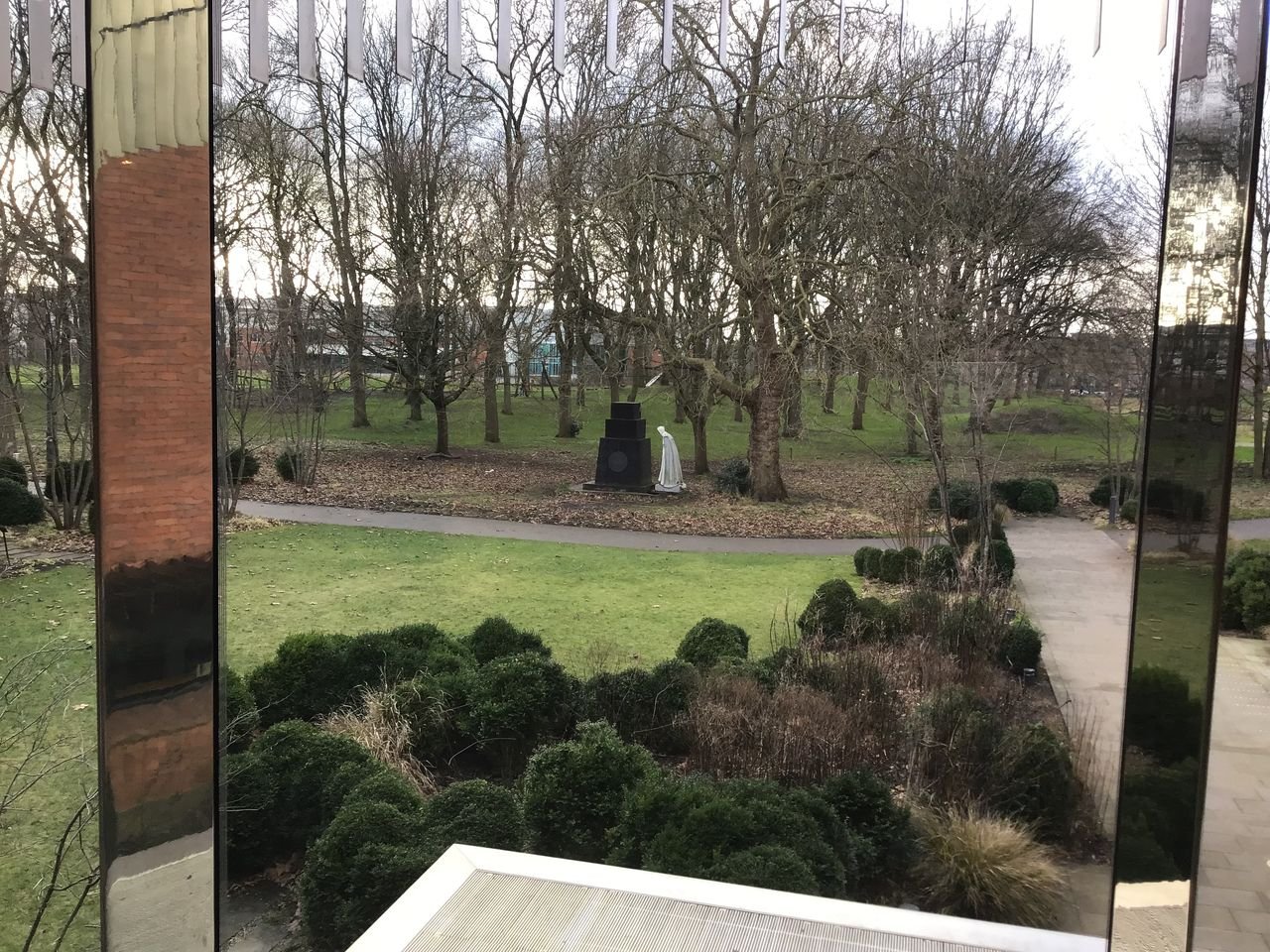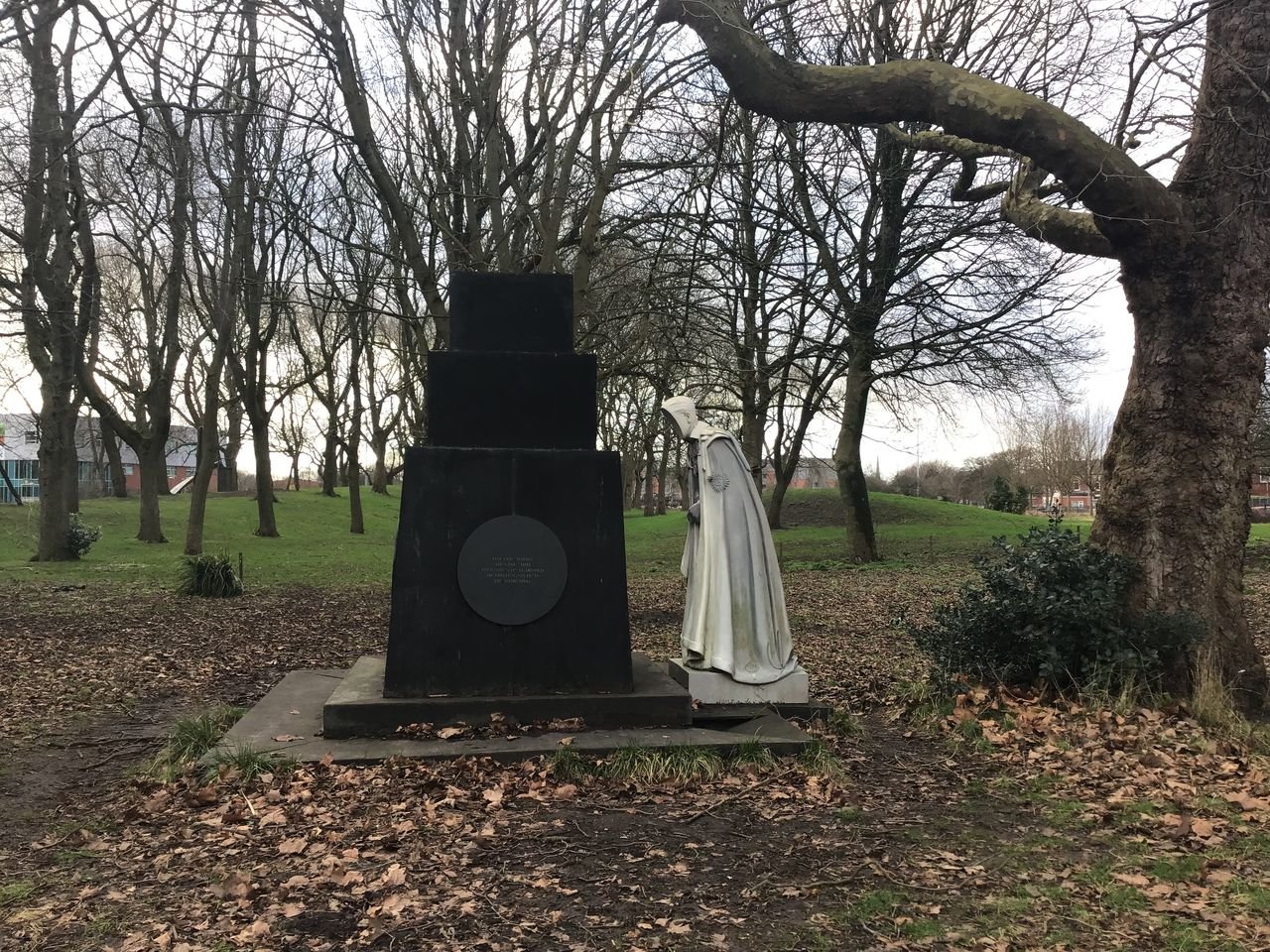Adam Trela’s “Faceless Man”
Learn more about Adam’s process in using Trnio Plus to capture and create this breathtaking design.
Faceless Man - creative process
“I knew that to test Trnio+ I needed something challenging, spectacular in its form and unusual. After a small image search, I found my mark: “Bending figure” standing in Whitworth Park adjacent to Whitworth Art Gallery. The Whitworth is part of The University of Manchester, in northwest England.
The statue is part of the "Twilight Language" exhibition by Raqs Media Collective.
With a goal in mind, I packed my iPad, a cup of hot coffee and a bottle of water and I embarked on my scanning adventure. The weather on the day was perfect for outdoor scanning.”
“Upon arriving on the scene I realized that access was partially obstructed. There was a black podium in front of the statue. The podium turned out to be a rather delicate construction therefore needed extra care while standing on it. To capture all the details from obstructed areas I needed to get into some unconventional poses - thank you Yoga with Adrienne.
I tried to make sure to grab every angle and took extra care in highly detailed or contrasted areas. I took the first series of photos after which I took a small break. I sat down to hydrate and review what I already captured. Then took the second series of photos to fill the gaps from the first one. After reviewing all of them and removing all blurry shots I've ended with 253 photos.
Uploading them into the Trnio+ app was a breeze. I've just selected all the photos and voila - now just waiting for the scan to be ready.
Once your scan is ready you get a chance to review and position it. Trnio+ will generate a short preview video with a camera orbiting around your scanned object. You can share it via email, Discord, Dropbox and other channels.
You can also export the scanned object file via the same channels. I've opted for Dropbox since I knew I would continue working on it on PC in my studio. It was uploaded almost instantly.
Upon close inspection, I really liked the mesh. There were no floating islands, it was one coherent mesh and the texture was applied correctly.
I took my faithful creative companion stylus and with headphones on I've started trimming the bits I deemed unnecessary for my needs. I decided to use Blender 3.0 for this project due to its extensive capabilities and my familiarity with it.”
Test renders (mesh partially cleaned):
“I decided to call this statue the Faceless Man. I knew he was part of the art exhibition but I've stopped myself from reading much about his meaning until I've completed the piece. I wanted to give him a new meaning, to convey it through my own lenses. Such enigmatic nature of Faceless Man allowed me to portray him in a more abstract and surreal way.
I've started with pencil and paper, drawing quick sketches supported by notes of what elements could work. Surprisingly enough the final look has proven to be different from what I anticipated in my sketches. I guess it's worth having a goal in mind but being open during the journey towards it can be even more valuable.
His presence felt very strong to me. He had all the elements of human form apart from his face which made him impossible to identify. All the remaining parts were shrouded from our eyes in the angle I've chosen for the shot. I decided to add two rows of almost identical columns which like our arms and legs may seem identical at first yet vary in small details.
Material choices were led on the principle of illusory appearance. Converging the meaning and form. Foreground to remind us of dry unfertile soil even though it is in fact PBR marble material.
What seems like a water aqueduct is also a marble texture.
This dualistic set of columns and material choices helped me with underlining the powerful nature of the Faceless Man being able to cause the unspecified form to existence - from the soil watering it with life creating light - while he himself is deprived of existence in the “world of faces” through which we communicate…...or maybe he's scanning the object?”
Final render done in Blender 3.0 using Cycles rendering engine.
About the artist:
Adam Trela is a 3D Artist and creative designer based in the Greater Manchester area of the United Kingdom.
He’s a keen experimenter of using 3D as an art. Mixing photogrammetry with modelling, reality with imagination, breaking the unknown rules to produce new forms of aesthetics.
Years of professional work in creating architectural visualizations of commercial spaces as well as years of level design for video games influenced his current approach to 3D.
Instagram, Twitter, Sketchfab - @oldjzc
LinkedIn, Art Station, Facebook - Adam Trela





